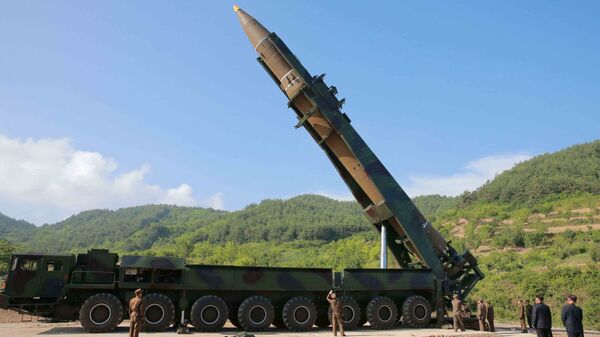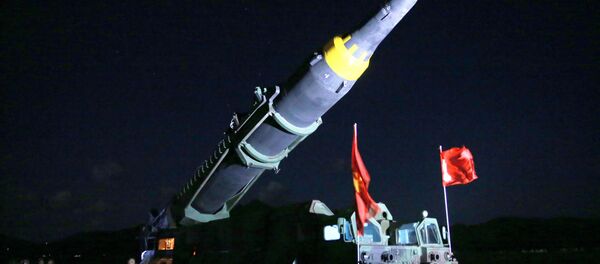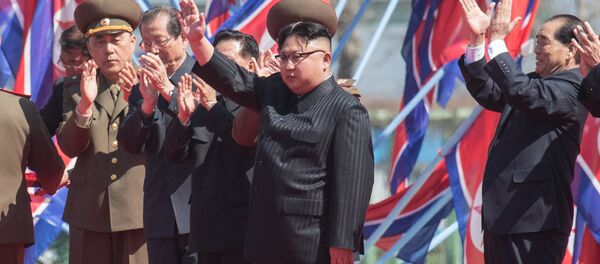North Korea will be able to create an intercontinental ballistic missile as early as 2018. This was reported by The Washington Post and The New York Times with reference to sources in the US intelligence.
According to the sources of the publications, the new assessment is based on recent tests of North Korean weapons; specifically the launching of ballistic missile Hwaseong-14 on July 4.
In the Pentagon it is assumed that the leader of the DPRK Kim Jong-un will receive a reliable intercontinental ballistic missile with nuclear weapons in 2018.
"North Korea's plan is running faster than we expected. We did not think that the ICBM will be tested in July, "said one official familiar with the assessment of the US Department of Defense's Intelligence Department (RUMO).
In light of these developments, the US is becoming seriously concerned. Recently it was reported that the residents of Hawaii are preparing for a nuclear strike.
A special educational program is being carried out based on a scenario in which over Honolulu at an altitude of more than 0.3 km an explosion of a nuclear charge of 15 kilotons takes place.
Are You Ready? Stop by at Hawaii Kai Costco until July 23 to pick up a #free copy of #emergency #preparedness #handbook #hawaiiema pic.twitter.com/ExrBTyX22L
— Hawaii EMA (@Hawaii_EMA) July 20, 2017
To prepare for such incidents, the US authorities also intend to create a more modern system of warning about the attack.
Ticket into the “nuclear club”
In an official statement, the head of the Department of National Intelligence for East Asia, Scott Bray said that North Korea’s recent test of an intercontinental-range ballistic missile was not a surprise.
“This test and its impact on our assessments highlight the threat that North Korea’s nuclear and ballistic missile programs pose to the United States, to our allies in the region and to the whole world,” Bray said.
According to the New York Times if the DPRK can really prepare an ICBM capable of reaching the US by 2018, this will happen before the modernization of the US anti-missile defense system.
"The danger is that the time to make a decision is significantly reduced due to the presence of weapons from North Korea, and an escalation of the conflict can occur at any second," the Washington Post quotes John Wolfsthal, the former senior director of the Arms Control and Non-Proliferation Agency, as saying.
Coats said: “Well, they’ve got some work to do to, I think, get through the club door, but they are very persistent in achieving that goal and we see a lot of research probably gained by each launch that they do whether it fails or succeeds.”
On high alert
In a classified briefing for all the members of the chamber, the House Armed Services Committee said that North Korea’s intercontinental ballistic missile development is a risk that grows each day.
The briefing team included Rob Soofer, deputy assistant secretary of defense for nuclear and missile defense policy; Air Force Lt. Gen. Samuel Greaves, director of the Missile Defense Agency; and representatives from the DIA and the National Air and Space Intelligence Center.
“The apparent success of the July Fourth test is an alarming development as North Korea accelerates its pursuit of being able to hold the United States at risk with nuclear weapons,” Committee Chairman Rep. Mac Thornberry, R-Texas, said after the classified briefing, “I have grown increasingly alarmed that North Korea is acting with a greater sense of urgency than we are.”




